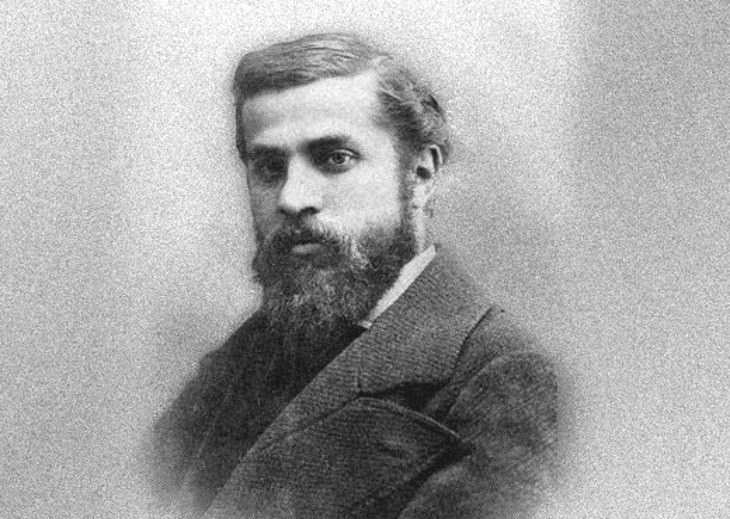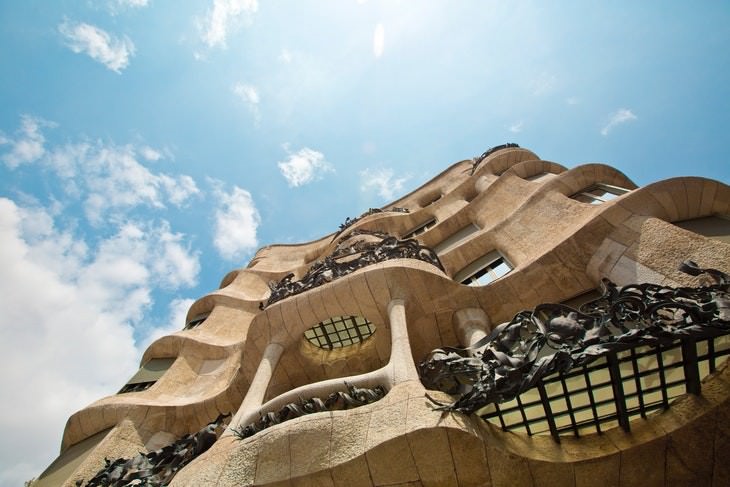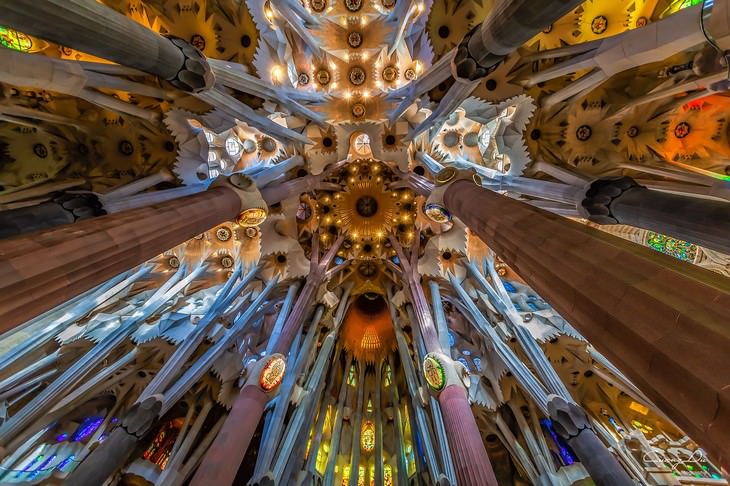One of the few photographs of Antoni Gaudi (1878) by Pau Audouard
Gaudi’s works are characterized by a unique style that can only be described as being alive. Deeply rooted in nature, nearly every structure ever conceived by the architect resembles a beautiful mountain, a forest, a flower garden, a fierce animal or a mixture of them all at the same time rather than an ordinary building.

The interior of Casa Batllo
Clearly, the architect was in awe of nature, and this love and admiration to everything alive started from an early age, as Gaudi was born in a village in Catalonia and frequently undertook hiking trips in the area, as well as the adjacent region in southern France, despite suffering from chronic joint pain and rheumatism from an early age. The young Gaudi was one of 5 children in the family of coppersmith Francesc Gaudí i Serra and Antònia Cornet i Bertran.
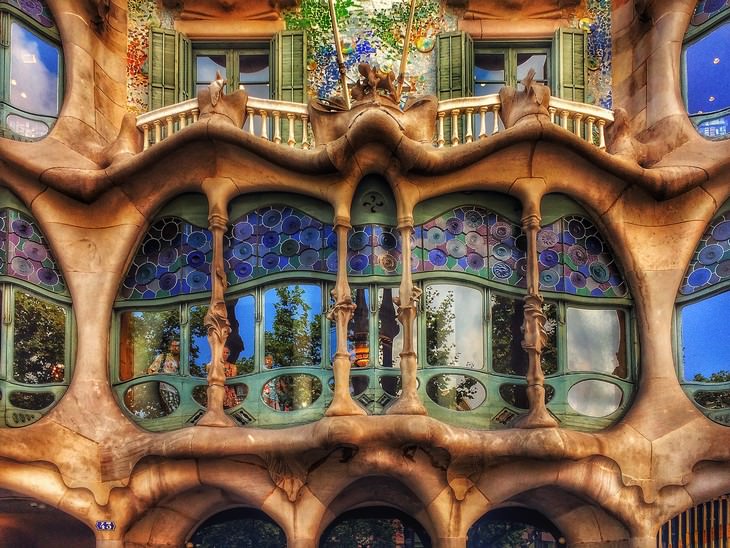
Having exhibited artistic talent from an early age, Gaudi pursued the calling of becoming an architect at Barcelona Architecture School, from which he graduated in 1878. The architect started from smaller projects, such as the lampposts at the Placa Reial in Barcelona, but after he landed his first major commission, Casa Vincens, and was noticed at the Paris World’s Fair in 1878, his career skyrocketed.
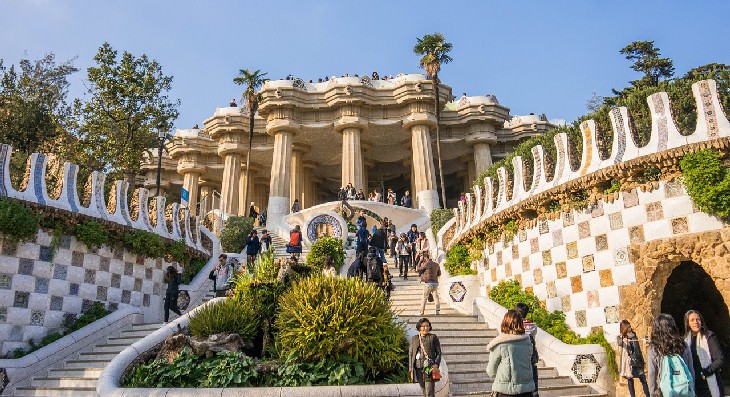
Park Güell
During the Paris World's Fair, Gaudi met the industrialist Eusebi Güell, who was impressed by the young architect's talent and would ultimately become Gaudi's lifelong friend and patron. Immediately, Gaudi started working on a series of projects for the businessman, particularly Palau Güell, and later on Park Güell seen in the photos above and below. At this point in his career, Gaudi was still heavily inspired by Orientalist and Neogothic motifs, but this would soon change.
These and other luxury estates he built during the late 1870s made him famous in Barcelona, and in 1883, Gaudi was commissioned to complete a church in Barcelona, the famed Sagrada Familia. Instead of simply completing the project, however, Gaudi scrapped the previous plans and decided to start the project from scratch.
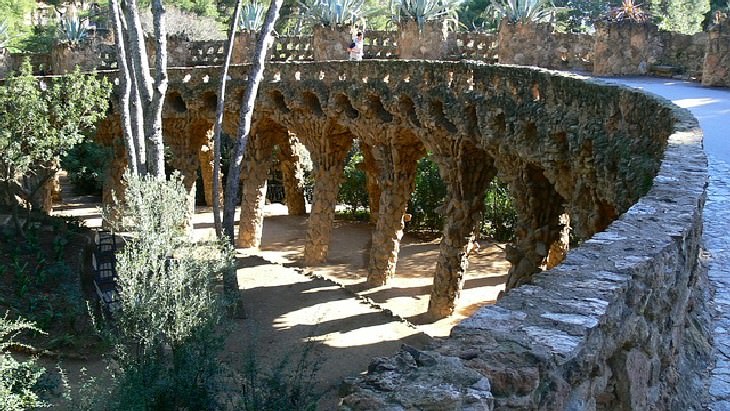
Meanwhile, the architect continued working on numerous projects simultaneously, both abroad and in Spain, and his style slowly evolved from the mainstream Victorian and Art Nouveau style to a more naturalistic approach to architecture, which would become his signature style.
Slowly, but surely, Gaudi became more and more consumed by the idea of building the greatest church on the planet and became more and more pious. Ultimately, he abandoned nearly all of his other projects and concentrated completely on the Sagrada Familia, which would become his final and main work, his magnum opus.
Casa Milà
It soon became apparent to Gaudi that the plans he had for the church were too grandiose for him to complete, and so created extremely detailed plaster models of the church’s interior and exterior, which remain the major source and reference for architects that continue working on the Sagrada Familia to this day.
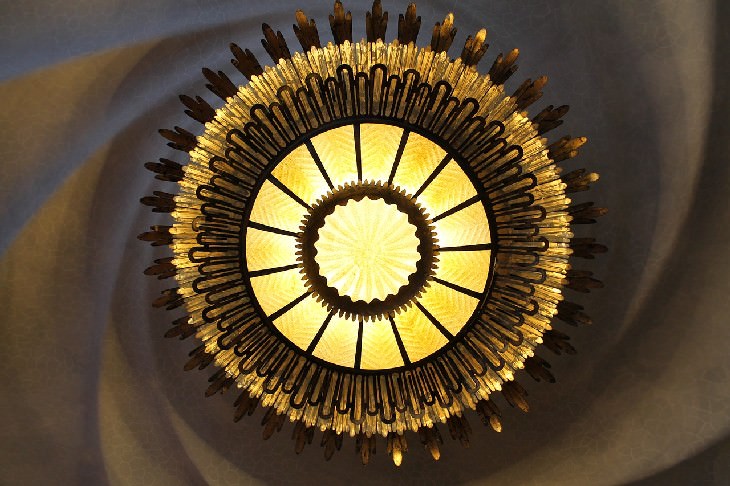
Interior detail at Sagrada Familia
Gaudi was never married and fathered no children, completely dedicating his life to his art, and this utter and complete dedication turned the once handsome, well-dressed dandy into a man consumed by his work, especially after several of his family members, friends and collaborators died from 1910 to 1916.
The Sagrada Familia today
From that point onwards, Gaudi dedicated his entire life to Sagrada Familia, so much so that he even abandoned his home in Park Güell and started living on the building site of the church until his tragic death on June 7, 1926, when he was run over by a tram and swept to the side of the street, confused for a homeless person.
The Interior of the Sagrada Familia
Three days later, the genius architect passed away at the age of 73 and was buried in the crypt of the unfinished Sagrada Familia. At the time of his death, only 15-25% of the Sagrada Familia was complete, and to this day, the construction continues, and with it continues the legacy of the genius architect, who since then, gained the much-deserved name of “God’s Architect”.
Bonus: a Video Documentary about Gaudi and the construction history of the Sagrada Familia

